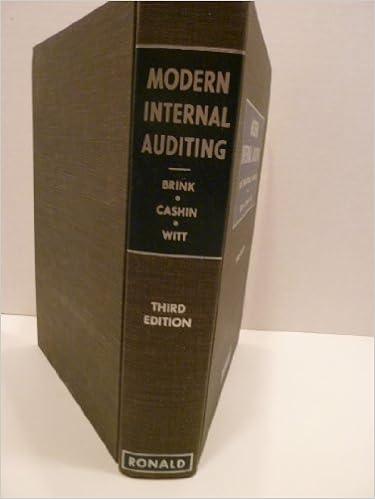1. Prepare a schedule that shows the gross margin for both products.

Oick the loon to vew dats about the busine Oick the ioon to view the process map Regrement Data Table Begin by alocating the indinect nesources to the cost pools First densty the formuia abels, Pen compute he allocated processing aivity cost indinedt Resoure Pant and machinery Engineeing ests Processing acivity cost Pn Done i More Info The process map depicts a two-stage ABC system, which uses two stages of allocation to get from the original indirect resource cost to the final product or service cost. (At this point, Ramirez Plastics uses the ABC system only for production costs, so the 590,000 of non-production value-chain costs remains unallocated.) The first stage allocstes indirect resource costs to sctivity-cost pools, in this case two sctivities, processing activity and production support activity. The second stage allocates activity costs to the products or services. In essence, the cost objects in the first stage are the activities, and the cost objects in the second stage are the products. Ramirez Plastics has only two indirect resources. (1) plant and machinery and (2) engineers and CAD equipment, and only two activities, (1) processing and (2) production support. The cost of engineers and CAD equipment depends mainly on the amount of time engineers spend on a product. Engineers spend, on average, about 48 minutes each hour performing production-support activities, such as designing casings. They spend the other 12 minutes | supervising the processing activity. Thus, we allocate (48/60-80% and (1260) = 20% of the cost of engineers and CAD equipment to the production-support and processing activities, respectively. The cost of plant and machinery depends mostly on the square feet of space used. Processing uses 75% of the space and production support uses 25%, so processing gets 75% of the plant and machinery cost and production support gets 25%. Print Done Engineers and CAD Equipment Resource ll Unallocated Value Chain Costs Plant and $186,000 Processing Activity 3139500 8,600 $148,100 Support Activity 346,500 34,400 580,900 Allocation Base Direct Labor Hours] Allocation Bzse Distinct Parts Caect Materizls for Pen Direct Labor for Cell Phone Casings 315,600 Labor for pen eriala fo Cell Phone 32400 $136,000 312,300 Unallocated 590,000 Sales $390,000 Sales $100,000 Financial Reports for Ramirez Plastics Company Traditional Cost Allocation System Panel B Contribution to Corporate Costs and Profit Internal Strategic Decision-Making and Panel A Statement of Operating Income Pen Casings Cell Phone Casings Sales Cost of goods sold: Direct materisl Direct labor Indirect 490,000 390,000 100,000 35,200 22.400 12.800 151,800 136,000 15,800 229,000 206,100 384,500 25,500 22,900 51,300 48,700 415,800 Cost of goods sold 74,200 S Gross profit 90,000 5 (15,800) 15.14 Operating loss 8.54 48.70 Gross profit margin Of the $229,000 total indirect manufacturing costs, engineering related costs are $43,000. Oick the loon to vew dats about the busine Oick the ioon to view the process map Regrement Data Table Begin by alocating the indinect nesources to the cost pools First densty the formuia abels, Pen compute he allocated processing aivity cost indinedt Resoure Pant and machinery Engineeing ests Processing acivity cost Pn Done i More Info The process map depicts a two-stage ABC system, which uses two stages of allocation to get from the original indirect resource cost to the final product or service cost. (At this point, Ramirez Plastics uses the ABC system only for production costs, so the 590,000 of non-production value-chain costs remains unallocated.) The first stage allocstes indirect resource costs to sctivity-cost pools, in this case two sctivities, processing activity and production support activity. The second stage allocates activity costs to the products or services. In essence, the cost objects in the first stage are the activities, and the cost objects in the second stage are the products. Ramirez Plastics has only two indirect resources. (1) plant and machinery and (2) engineers and CAD equipment, and only two activities, (1) processing and (2) production support. The cost of engineers and CAD equipment depends mainly on the amount of time engineers spend on a product. Engineers spend, on average, about 48 minutes each hour performing production-support activities, such as designing casings. They spend the other 12 minutes | supervising the processing activity. Thus, we allocate (48/60-80% and (1260) = 20% of the cost of engineers and CAD equipment to the production-support and processing activities, respectively. The cost of plant and machinery depends mostly on the square feet of space used. Processing uses 75% of the space and production support uses 25%, so processing gets 75% of the plant and machinery cost and production support gets 25%. Print Done Engineers and CAD Equipment Resource ll Unallocated Value Chain Costs Plant and $186,000 Processing Activity 3139500 8,600 $148,100 Support Activity 346,500 34,400 580,900 Allocation Base Direct Labor Hours] Allocation Bzse Distinct Parts Caect Materizls for Pen Direct Labor for Cell Phone Casings 315,600 Labor for pen eriala fo Cell Phone 32400 $136,000 312,300 Unallocated 590,000 Sales $390,000 Sales $100,000 Financial Reports for Ramirez Plastics Company Traditional Cost Allocation System Panel B Contribution to Corporate Costs and Profit Internal Strategic Decision-Making and Panel A Statement of Operating Income Pen Casings Cell Phone Casings Sales Cost of goods sold: Direct materisl Direct labor Indirect 490,000 390,000 100,000 35,200 22.400 12.800 151,800 136,000 15,800 229,000 206,100 384,500 25,500 22,900 51,300 48,700 415,800 Cost of goods sold 74,200 S Gross profit 90,000 5 (15,800) 15.14 Operating loss 8.54 48.70 Gross profit margin Of the $229,000 total indirect manufacturing costs, engineering related costs are $43,000












